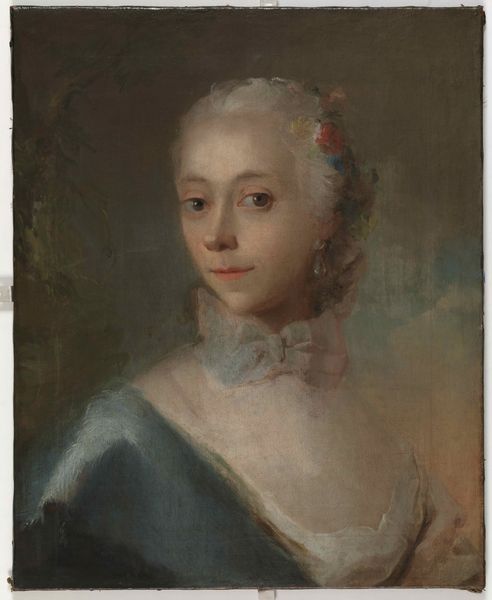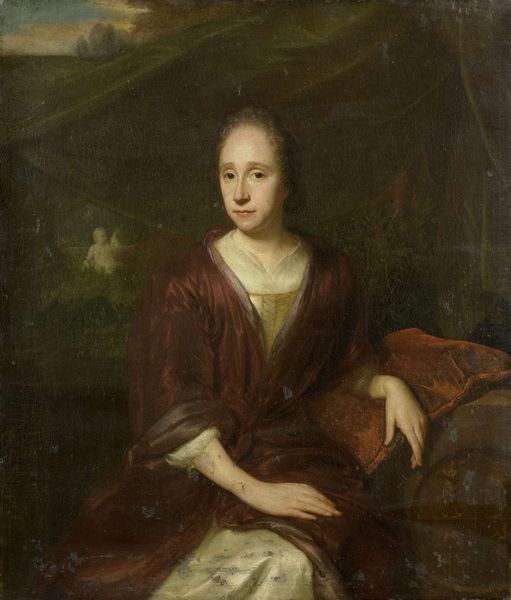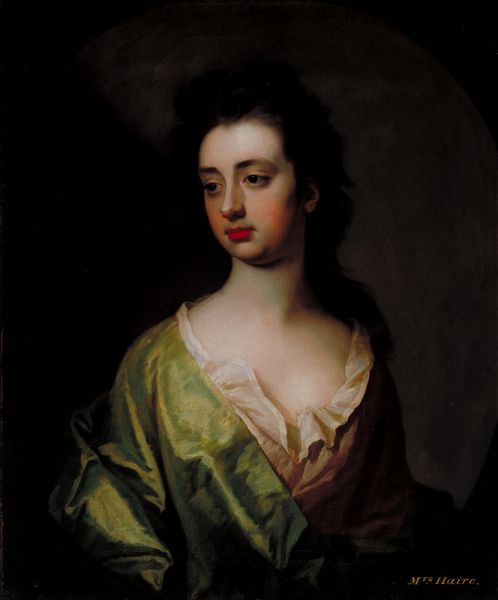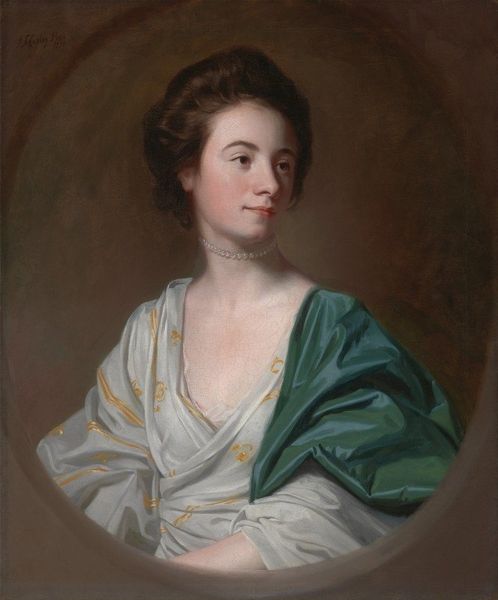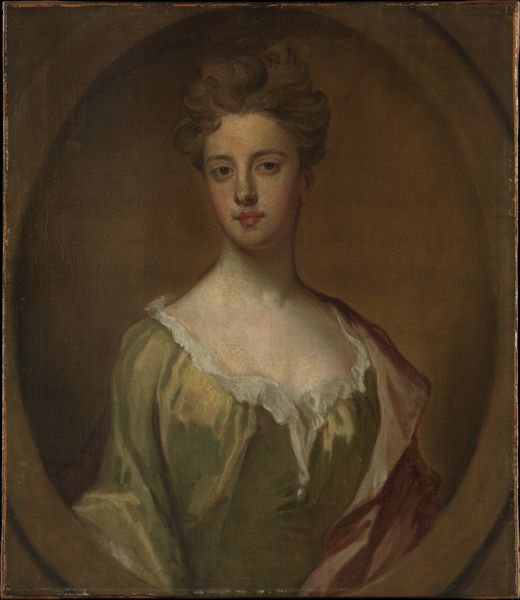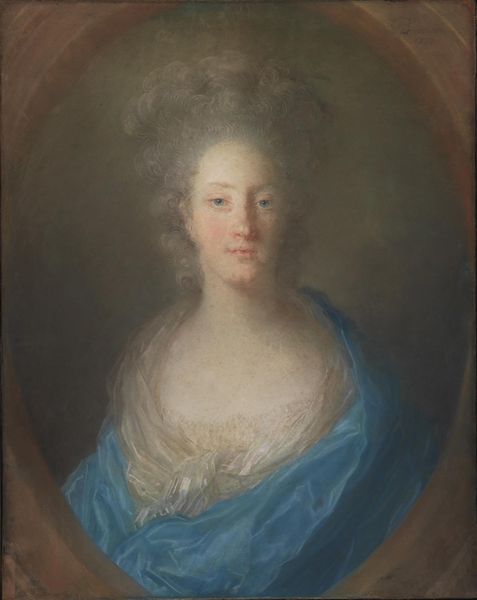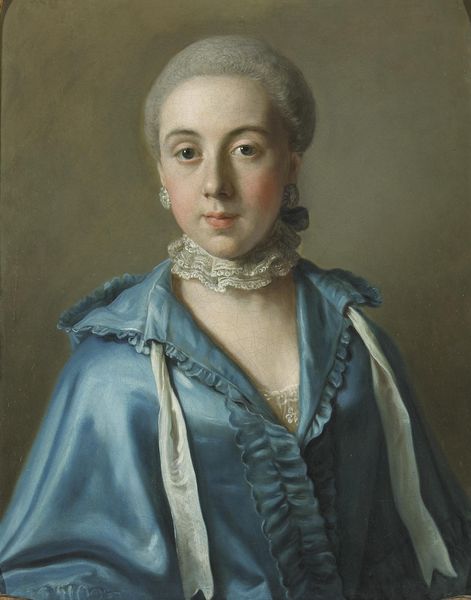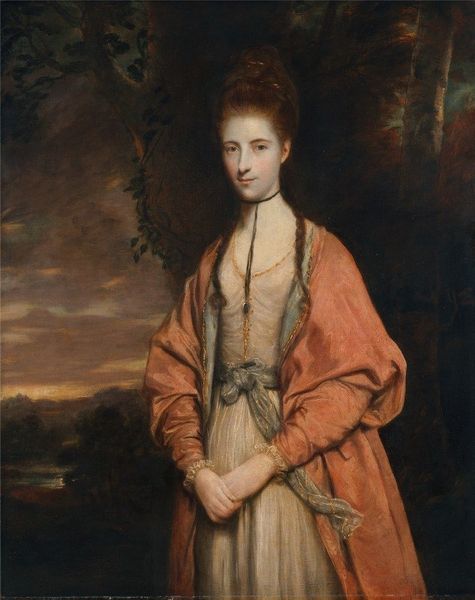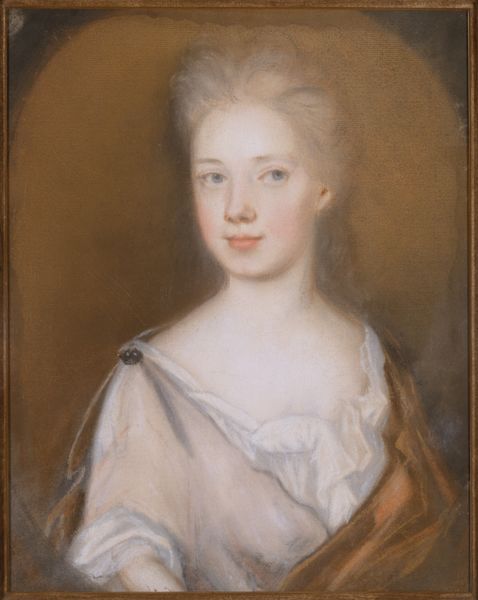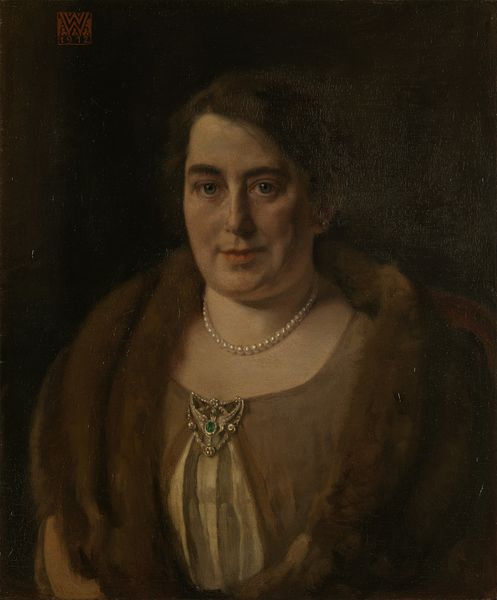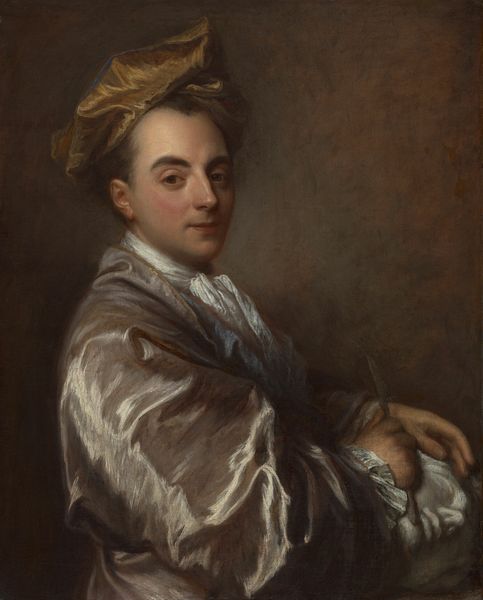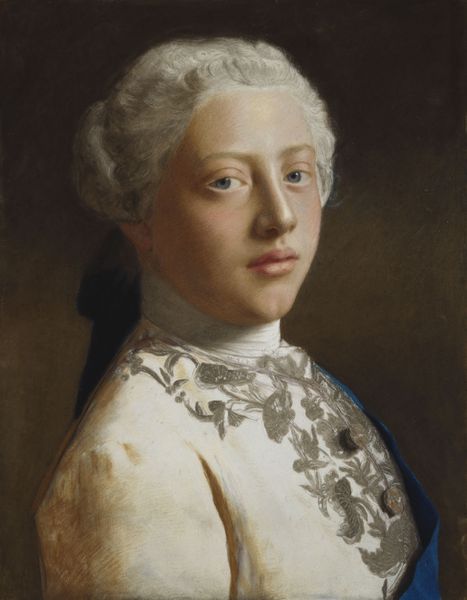
pastel
#
portrait
#
self-portrait
#
portrait drawing
#
pastel
#
northern-renaissance
#
rococo
Copyright: Public domain
Curator: Here we see Jean-Étienne Liotard's pastel drawing titled, "Portrait of a Lady." The work is undated, but the attire suggests a period sometime in the mid-18th century. Editor: It's remarkably serene, wouldn't you say? There's an almost unsettling stillness about her gaze that feels both vulnerable and powerful. Curator: Yes, and Liotard often used pastels to capture these subtleties in complexion. There’s a deliberate softness that enhances her almost ethereal beauty. Pastels, of course, became increasingly popular during the Rococo period for their ability to render delicate textures and capture fleeting moments. Editor: That rosy-brown robe, trimmed with fur, speaks volumes. What do you make of it? The woman’s status is almost palpable, don’t you think? This feels very much like a performance of nobility and aristocratic presentation of power, wouldn’t you say? Curator: I think so. The sumptuous materials indeed signal wealth and status. Yet the somewhat direct and steady gaze is not entirely compliant. It complicates the picture of straightforward power and social expectation, adding depth. Editor: Absolutely. I keep returning to the eyes; they appear remarkably direct, almost challenging. I would venture this isn't just a surface representation of beauty, it encapsulates an inner resolve and potential for subversion. Especially in the context of that lace trim we see so little of. Curator: Symbols within symbols, wouldn’t you agree? In the history of female portraiture, we must recognize the artist allows his female subject not to be reduced simply as a pretty object. Her dignity, her being there as a conscious person are well portrayed and even somehow imposing and strong. Editor: It does disrupt established gendered expectations. In this era where portraiture was largely about conveying patriarchal authority, the woman emerges as an assertive presence, resisting any simplified narrative. Curator: Indeed. The layers Liotard invites us to explore within the framework of Rococo are captivating, challenging our own presumptions of a bygone age. Editor: Absolutely. "Portrait of a Lady" then functions not only as a portrayal of a specific subject but also as a canvas for discussing gender, power, and perception, across time.
Comments
No comments
Be the first to comment and join the conversation on the ultimate creative platform.


